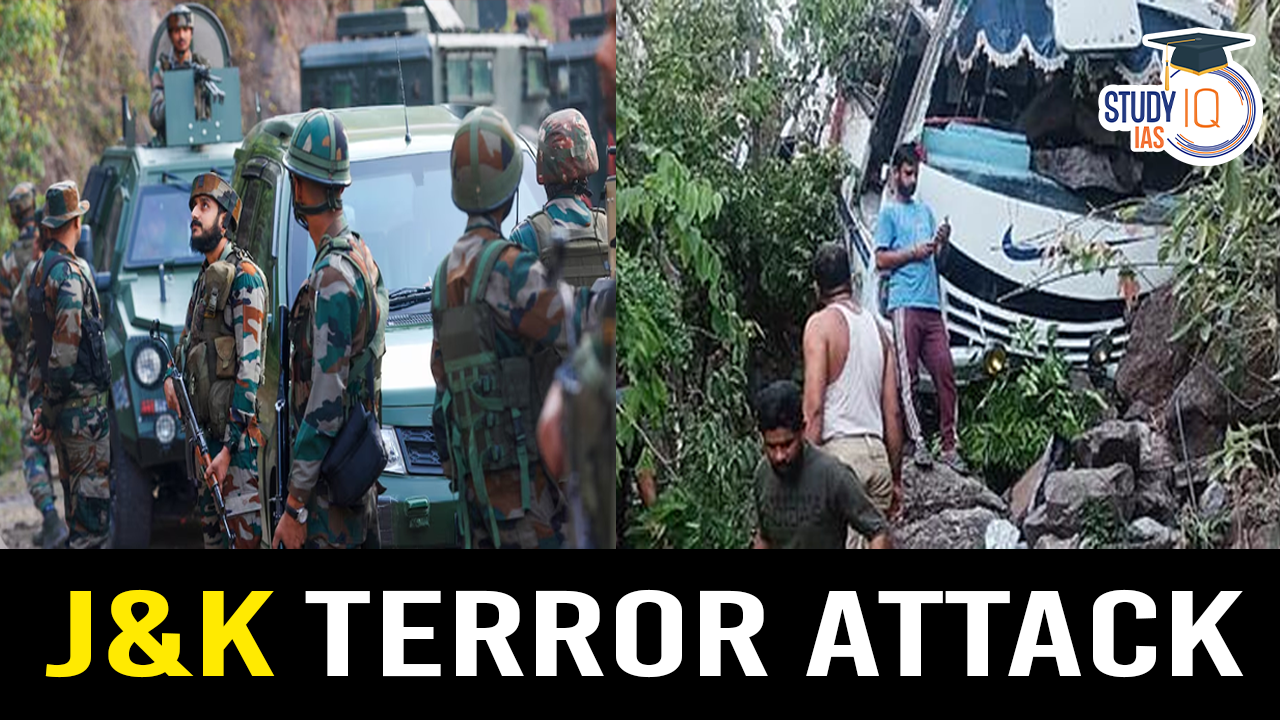Table of Contents
Context: The Union Home Minister directed the security forces in Jammu & Kashmir (J&K) to replicate Kashmir Valley’s successful security strategies in Jammu, focusing on area domination and a zero terror plan.
More in News
- In the past five years, a stringent security approach in Kashmir has minimised casualties among both security forces and civilians.
- In 2023, the number of security personnel killed in Jammu tripled to 21, compared to 11 in the Valley (2022).
Key Strategies and Operations in Jammu and Kashmir
- Suppression of Political Movements: Efforts to reduce the influence of mainstream political parties and discredit separatist ideologies.
- Shift in Security Tactics: Post-2019, the focus shifted from targeting active militants to dismantling the broader terror ecosystem.
- Prevention of Militant Recruitment: Authorities stopped returning bodies of militants to their families to prevent large funerals, which were used as recruitment platforms.
- UAPA and Legal Actions: Targeted individuals involved in supporting terrorism under the Unlawful Activities Prevention Act (UAPA), offering more stringent and accountable detentions compared to the Public Safety Act (PSA).
- Enhanced Investigation Capabilities: Establishment of the State Investigation Agency (SIA) and Special Investigation Units (SIUs) at the district level to improve the quality of investigations and secure convictions.
Institutional and Administrative Measures
- Property Attachments: Since 2022, properties of organisations and individuals linked to terrorism have been attached, preventing any transactions without prior permission from the DGP of J&K Police.
- Scrutiny and Transfers of Educators: Identified and transferred at least 50 teachers with a separatist tilt to disrupt their influence.
Current Security Situation
- Stronger Security Grid in Kashmir: Improved monitoring of militant mobility patterns has enhanced security, though the security force concentration is weaker in Jammu, impacting response times.
Challenges
- Civilian Casualties: Despite security measures, over 160 civilians, including labourers and artisans from outside Kashmir, have been killed since 2019 in terror-related incidents.
- Alienation Due to Lack of Political Representation: The absence of an elected government and the abrogation of Articles 370 and 35A have deepened local grievances.
- Signs of Latent Anger: The electoral success of Engineer Rashid, a politician with a separatist tilt currently jailed on terror funding charges, against established politicians indicates persistent discontent among the populace.
| Reasi Terror Attack in Jammu Kashmir |
Terrorists opened fire at the 53-seater bus carrying pilgrims when it was en route from the Shiv Khori temple to the Mata Vaishno Devi shrine in Katra in Reasi district.
Community and Response to Reasi Attack
|
Shift in Terrorist Activities in J&K
- Geographical Shifts: There has been a notable shift in terrorist activities to the Jammu districts, possibly due to the strengthened counter-infiltration measures in the Kashmir Valley.
- Reasi, despite being away from the Line of Control (LoC), has seen renewed terrorist activities.
- Security Dynamics: The terrorists are possibly exploiting the challenging terrain of the Pir Panjal range, which provides cover and movement advantages.
- The recent attack involved militants using forest cover to ambush the pilgrims’ bus.
- Proxy Operations: Due to international pressure, particularly from the FATF, groups like Lashkar-e-Taiba (LeT) have resorted to using proxies like The Resistance Front (TRF) to carry out their activities.



 Phenome India Project: Mapping India's H...
Phenome India Project: Mapping India's H...
 UDAN Scheme, Objectives, Funding and Ach...
UDAN Scheme, Objectives, Funding and Ach...
 Indus Water Treaty 1960 Suspended by Ind...
Indus Water Treaty 1960 Suspended by Ind...





















